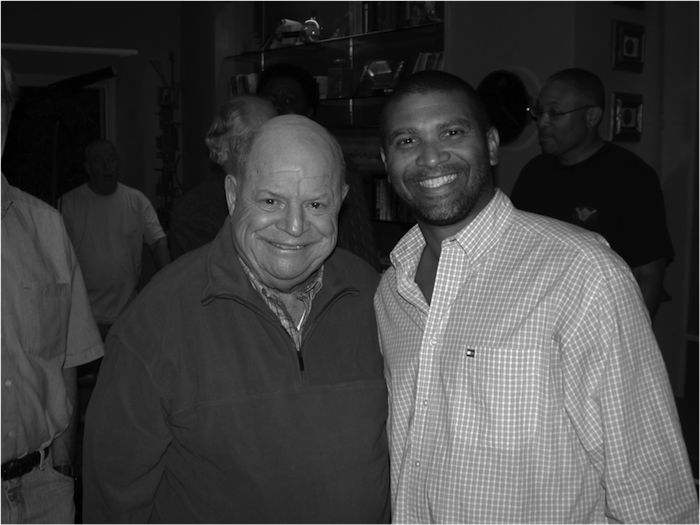
I was a producer/director on the Bernie Mac Show. In the first or second episode I directed on the series, the guest star was Don Rickles! Bernie Mac was a student (and master) of comedy and he loved inviting his comedy heroes on the show.
Like anyone with a sense of humor, I was a huge fan. Working with Legends like Rickles (or Eartha Kitt on BOOMERANG), I get the most stressed out. They’ve done it all, they’ve worked with the best, and I don’t want to disappoint them.
Don made jokes all day, snapping on everyone in the cast and crew, but it was clear there wasn’t a mean bone in his body. He had a shtick, everyone expected it, he was great at it, and it made the day go fast.
At the end of the day, he told me he enjoyed working with me, and for shock effect, gave me a kiss on the lips. He could never just give a compliment otherwise.
Thank you Bernie for the opportunity to work together all those years. During our final lunch he told me “you get better than anyone in Hollywood”. I don’t know who else he said that to, but I was sure glad I was one of them.
Comment
+ Permalink
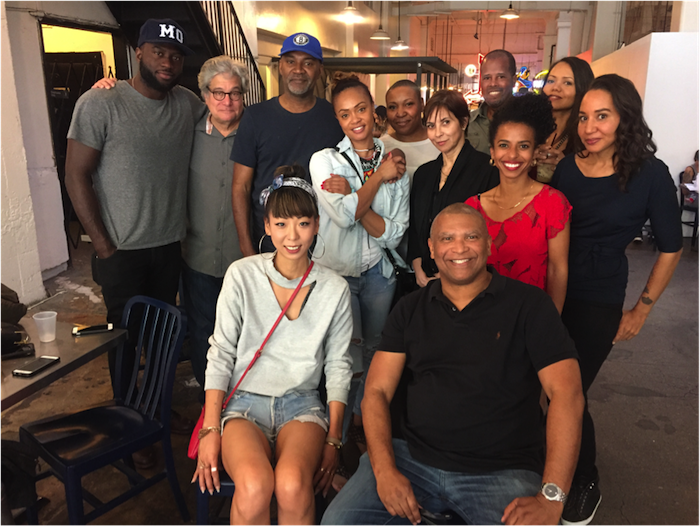
Nelson George is the hub of all things. He’s usually three people away of anyone worth knowing. So when he comes to Los Angeles and invites a bunch of his friends to see an art exhibition, it’s a must do.
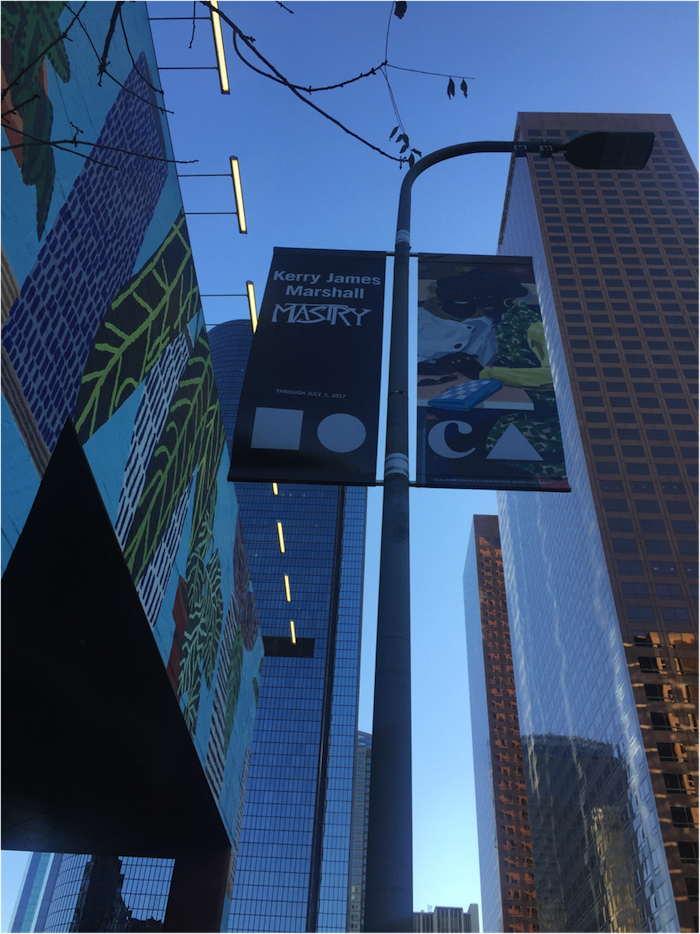
First of all, I wanted to see the exhibition anyway. I’ve been a fan of the art of Kerry James Marshall for years. I had been meaning to buy some of his art, but never got around to it. Now I’m sure I’ll never be able to afford it.

Photos like this can’t do the impact of the work in person. The size, the textures, the colors, and complex symbols, musical lyrics, black pride, love, anger and frustration all expressed in his huge body of work is an experience that must be done live.

I really wanted at least three of his gigantic canvases in my home to stare at for at least a day. There is so much going on.
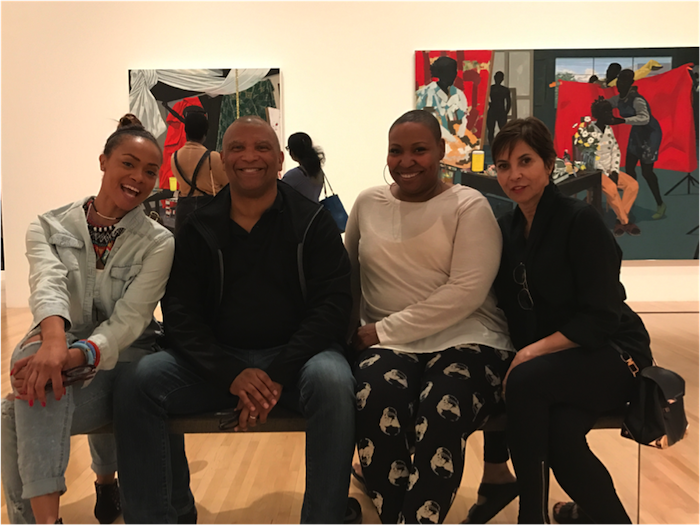
Because it was a Nelson George event, so many cool people joined. Amber Raspberry, Nikea Gamby-Turner, and Shelby Stone joined me on the bench while we critiqued the art (and shared Hollywood gossip).

Marshall also does comic books, a medium near and dear to my heart. I’m sorry I missed his talk earlier in the week, but it’s supposed to be online so I will try and check it out.
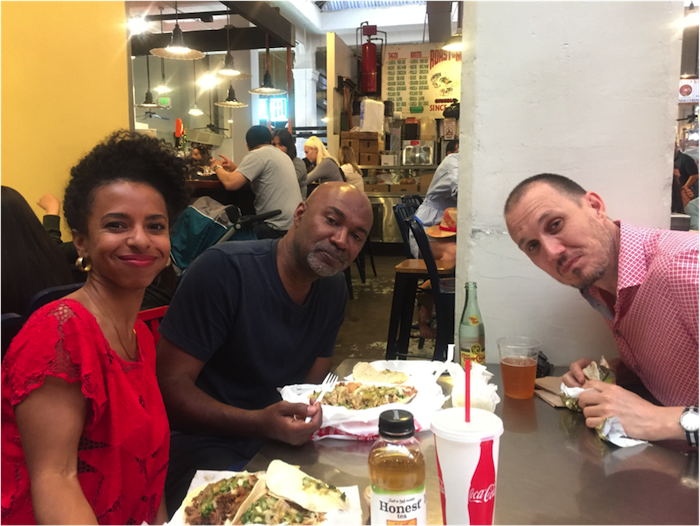
Afterwards, we actually walked several blocks in downtown Los Angeles and went to an open air market where tourists, hipsters and actual working people all mixed and got down with good cheap food.
Here’s Nelson flanked by Novena Carmel and Elliot Wheeler.
Comment
+ Permalink
27 years later, people are still writing about House Party! Here’s a recent review I just found online:
2 GUYS, ONE REVIEW: HOUSE PARTY
by Ryan McLelland

I missed the boat on House Party back in 1990. I’m not really sure why…I’m going to chalk it up to I just wasn’t the biggest Kid ‘n Play fan. I seem to remember them playing some club local here in Trenton and something happened. Maybe violence (as per usual) or they cancelled and then there was violence (as per usual). While I was familiar with Kid n’ Play I didn’t listen to their music. Around this time it was probably De La Soul and Ice-T. Still loved Run-DMC. DJ Jazzy Jeff and the Fresh Prince (which I’ll swing back to in a second). But not Kid ‘n Play. House Party actually didn’t play at many theaters around the country and I can’t be sure if and when it even played here. I caught House Party on home video and instantly loved it. I saw House Party 2 in theaters and pretty much loved it too. I would have seen House Party 3 in theaters but I was away at Basic Training so I had to wait until later to see the flick.
House Party was written, produced, and directed by the most excellent Reginald Hudlin. I’ve been in awe of the man for quite a number of years…we got to chat quite a number of years ago when I worked for Newsarama and I was doing an article on him. I got to profess my love for House Party (AND Boomerang. AND The Great White Hype) and it was really cool speaking to the man. But that was like…13 years ago. Man I’m living in the past, aren’t I?
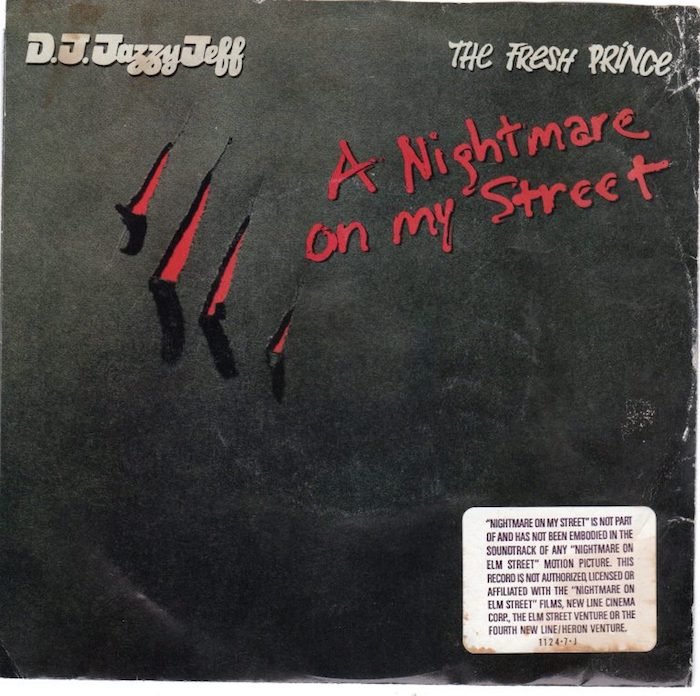
Back to House Party. For years it was rumored that the film was supposed to star DJ Jazzy Jeff and the Fresh Prince. I know there are direct quotes out there somewhere but I searched Google for two seconds and came up with basically nothing. Basically the story comes down to Will Smith and Jeff did the song A Nightmare on My Street from their MONSTER second album He’s The DJ, I’m the Rapper (dude I broke that cassette. I may have listened to Parents Just Don’t Understand 6,000 times). I believe New Line Cinema was pissed off about the song for some reason and warning stickers had to be put on the single’s release saying it had nothing to do with the soundtrack for Nightmare on Elm Street 4. But it also put the duo on New Line’s radar. They were offered House Party but turned it down. History has seen that was a bit foolish…though the duo would find success with Will’s Fresh Prince of Bel Air (and obviously Will would find massive box office success). By the by if you don’t cop Jeff Townes Summertime Mix each year you are truly missing out.

The plot of House Party is pretty simple. Play’s parents are away and he’s throwing a party. Kid wants to go to said party but ends up getting in trouble after a run in with Full Force (Paul Anthony, Bowlegged Lou, and B-Fine). The school sends a slip home which ends up reaching Kid’s Pop (Robin Harris). Kid goes on punishment…no party…no girlies…nothing. Luckily Pops falls asleep watching Dolemite so Kid sneaks out the house.
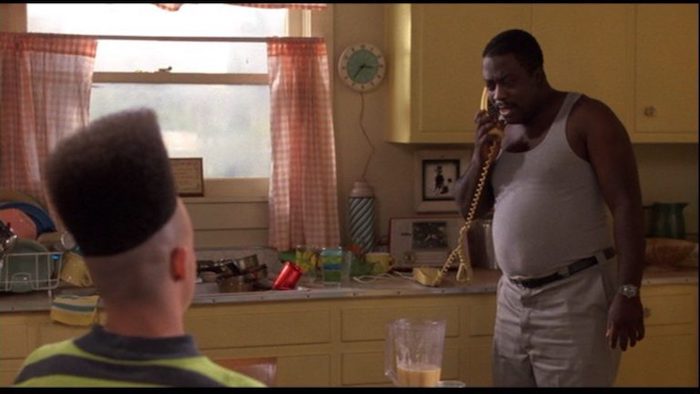
The thing is he has a hard time getting to the party. He doesn’t have a car so he has to huff it. But he’s not so lucky as he keeps trying to duck Full Force (who are out to kick his ass) while avoiding the slightly racist cops. Eventually Kid makes it to the party…which really is the best part of the movie.
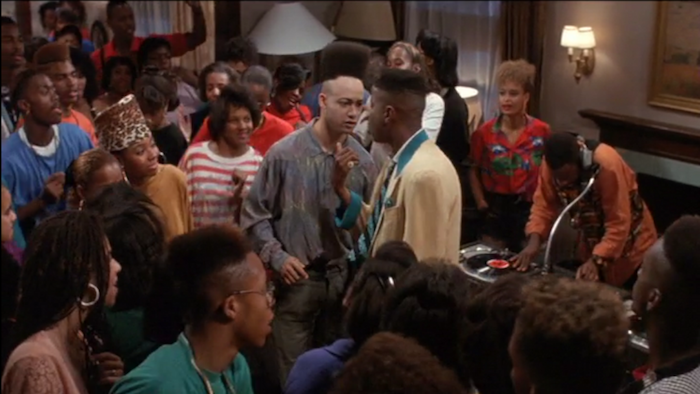
There’s so many great things about this party. The biggest thing is it actually feels like a high school party. Packed to the max with people, people dancing, the host trying to not get his parents shit broke. Not every party I went to had a DJ (at most it was just a radio playing music) but Kid and Play are also best friends with Bilal (Martin Lawrence) who is the DJ extraordinaire.

There’s two best friends in Sidney (Tisha Campbell) and Sharane (A.J. Johnson) who kinda both like Kid. They fuck with him a bunch and try to play it off to each other that they don’t really like him. But it become evident that they both kinda do like him. Causes a bit of tension – and it is really well done.
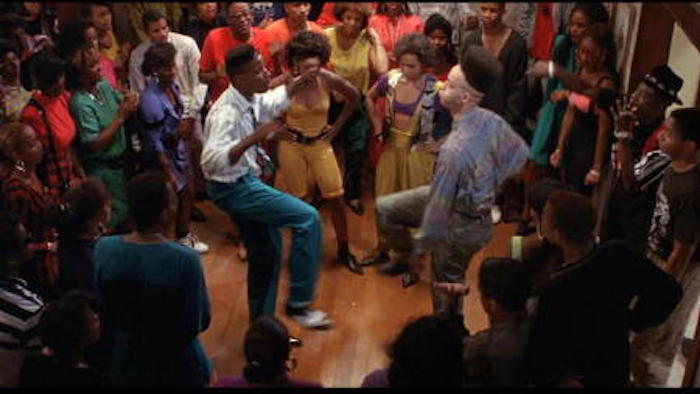
Probably the best known part of the movie is when Sidney and Sharane have a “dance battle” against Kid and Play. Kid and Play get to show off their well known dancing skills including the move that is dubbed “The Funky Charleston.” I’ll give it to them…it is a pretty great dance and it is no wonder they are so well known for it.
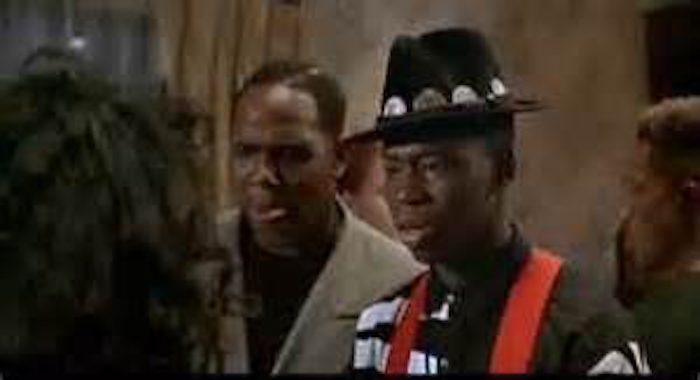
Rappers Groove and Chill (from the rap duo Groove B Chill) are in the flick as well. Groove hits the liquor pretty hard and actually starts out the dance battle with Kid before his drunk ass falls out and Play takes his place. Chill keeps hitting the DJ table and causing the track to skip – pissing off Bilal. It’s pretty damn funny. While you never really saw Groove again and the duo never released another album after their 1990 debut, Daryl “Chill” Mitchell has had a pretty damn long acting career. I love him from Sgt. Bilko and Galaxy Quest…plus his time on NBC’s show Ed. The man is now stuck in a wheelchair after a motorcycle accident and he is still out there getting acting gigs. I’m glad to see life didn’t keep him down.
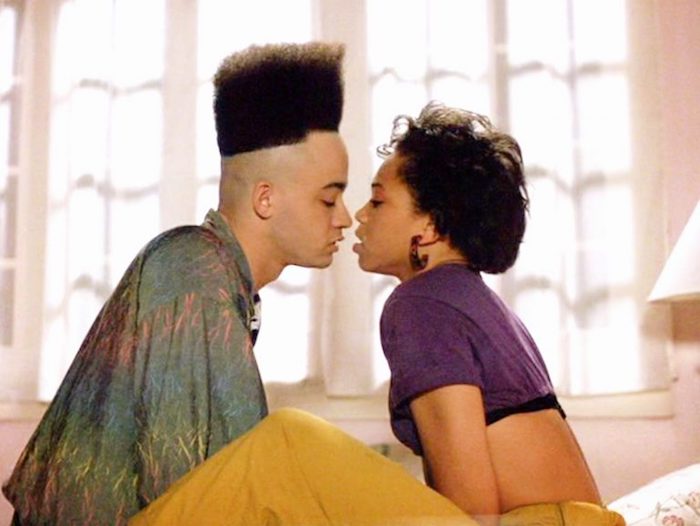
So Full Force show up to kick Kid’s ass but finally with some boys at his back they are driven away. Kid tries to kick it with Sharane and when that doesn’t work he tries to kick it with Sidney. That actually DOES work and the dude almost get some (if it wasn’t for his old ass jimmy-hat he just might have). After barely escaping Sidney’s parents Kid gets locked up against Full Force and then literally locked up in jail. This is also a quite humorous part as Kid tries his damnedest to rap his way out of getting ass raped in jail.

There’s so many great things about this movie. Absolutely #1 is both Kid and Play. They are amazing on screen. If you look back at the films of this time you come up with Krush Groove, Wild Style, Disorderlies, and Tougher Than Leather…all decent films but you learn quickly that, other than Run from Run-DMC, they really aren’t actors. Kid ‘n Play might be rappers but they are quite amazing actors. They sell the hell out of themselves on the big screen and they are damn fun to watch. They would release an album at the same time House Party came out (perfect timing) and see a big hit with their song Funhouse. They would star in 2 more House Party movies, another film Class Act, a kids cartoon, and a Marvel comic book.
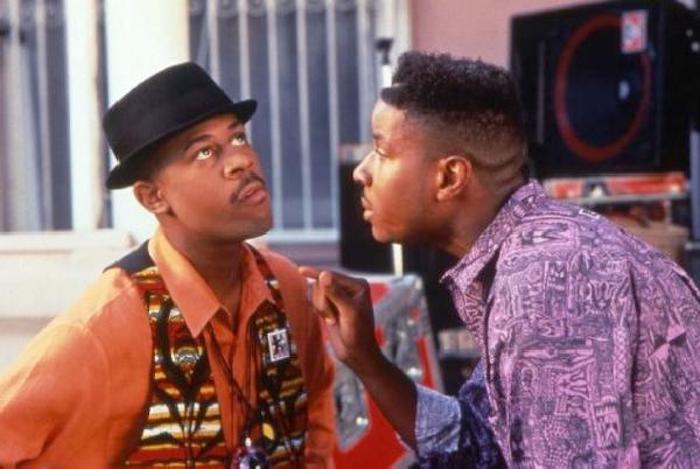
It didn’t take long for Martin Lawrence to break out huge. He would reteam with Kid and Play for House Party 2 and reteam with Hudlin for Boomerang. His show Martin would be a MASSIVE success for him (where he would team up with House Party’s Tisha Campbell…though things didn’t end well for that duo) and Bad Boys would launch Martin (and Will Smith) to the stratosphere.
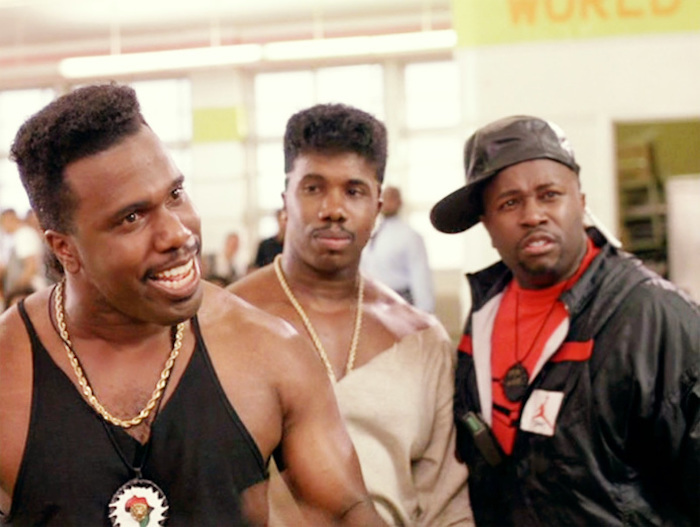
I always find it funny to see Full Force in these movies. It was about six years prior that Paul Anthony and B-Fine were playing toughs in Krush Groove and suddenly they were back playing HIGH SCHOOL STUDENTS. Dudes were like forty. Bowlegged Lou was always my favorite of the three as he has a bit of humor to him…but I enjoyed his performance in Who’s the Man just a bit more.
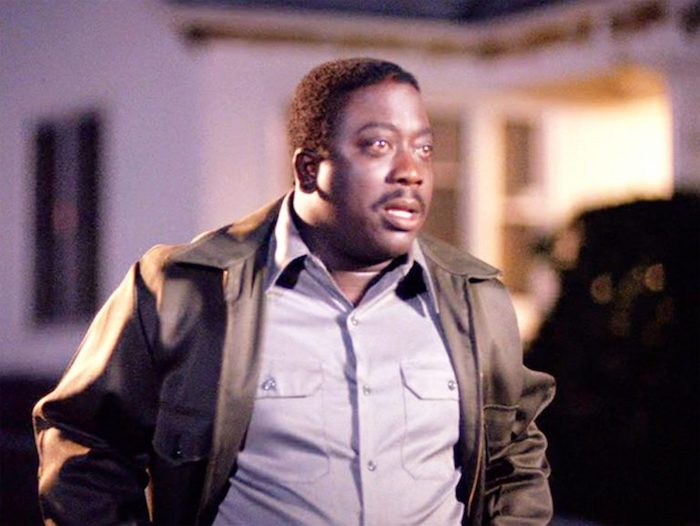
Robin Harris. Man…Robin Harris. Dude was funny. I watched a shit ton of HBO back in these days and there was NOTHING funnier than Robin Harris’ comedy act. Listening to him talk about Bebe’s Kids was just the funniest shit. He didn’t get to do too many movies – he’s probably most well known for House Party and Do the Right Thing…though I always find it funny he pops up as the bartender in I’m Gonna Git You Sucka. He died way too young. Dude was 36 when he died. 36 YEARS OLD. I am older than Robin Harris was when he did House Party and that shit blows my mind. I find his legacy a bit tarnished by the horrible Bebe’s Kids cartoon movie they did…but if Robin Harris is remembered for anything these days it is probably that damn cartoon (Jamika was a honey though). Watch some Robert Townsend Partners in Crime and tell me Harris isn’t the funniest man EVER.
While the sequels certainly didn’t reach anywhere near the level of the first House Party – this film is still one classic cult film. It’s funny that out of all the films in hip hop history this film series is the one that became a franchise (with three theatrical films and two direct-to-DVD films). There are a ton more hip hop movies to review and I think I will tackle the entire House Party series. Part 4 didn’t feature Kid or Play at all (the film starred IMX aka Immature who appeared in the third film) and while part 5 did feature cameos from Kid and Play the film did not revolve around them again. I’ve never seen the last two films so I guess I’ll be looking forward to tackling them for the first time. But next on the plate will be the pajama jammy-jam.
Comment
+ Permalink
By TAMARA BEST
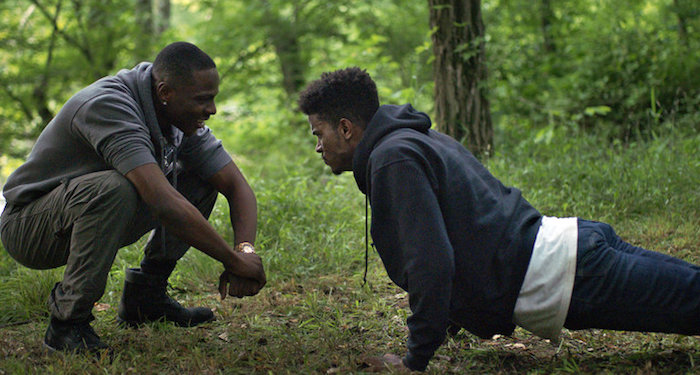
Mitchell Edwards, left, and Trevor Jackson in Gerard McMurray’s “Burning Sands.” Credit Netflix
Toward the end of the new Netflix movie “Burning Sands,” five young pledges of a fictional fraternity make their way through a wooded area before older fraternity brothers stop them at the entrance to a barn. As the doors are opened, one fraternity brother welcomes them to “hell night.” They are then relentlessly shoved, hit and paddled until one pledge collapses and begins foaming at the mouth.
It’s a relatively rare depiction of hazing onscreen, though it’s not unusual for television and film to use collegiate life to dissect thorny subjects. As hazing injuries and deaths periodically make headlines, “Burning Sands” and “The Quad,” which just wrapped its first season on BET, are timely explorations of the real repercussions of the violent ritual. Set on the campuses of historically black colleges and universities, these two projects have also prompted discussions over their representation of storied black organizations and life at these schools. A forthcoming documentary, “Tell Them We Are Rising: The Story of Historically Black Colleges and Universities,” by Stanley Nelson, will explore the place and importance of the institutions within the context of American history.
“Burning Sands” follows a group of young men during the final week of pledging as they bond while doing community service and other tasks. Hazing also plays a prominent role as pledges are repeatedly struck — the bruises both temporary physical marks and badges of honor of earning their membership.
“You have people who will try to do anything in order to become validated, and so there’s a value in them pledging,” Lawrence C. Ross Jr., author of “The Divine Nine: The History of African American Fraternities and Sororities,” said in a telephone interview. “On the other side is the feeling and allure of power on the person who is the big brother or sister with this idea that hazing is transmitting some sort of values.”
Gerard McMurray, director of “Burning Sands” and a member of Omega Psi Phi, said showing the violence was essential to convey the movie’s message. “The truth is the truth,” he said in a telephone interview. “I wasn’t going to sugarcoat it or water it down. It was important to show those things so people could know this is reality.” In some of the more violent scenes, sound design plays a critical role in depicting the brutality without showing its full extent.
“The Quad,” focused on a new dean navigating old traditions and financial troubles, has explored murder, sexual assault and hazing. In most cases, the violence takes place offscreen, which was the case for the hazing of freshmen band members.
“It’s so much more frightening to wonder what happens behind closed doors, and to let your imagination as a viewer decide,” said Felicia D. Henderson, executive producer of “The Quad.” “I wanted to make sure that the story wasn’t about seeing the violence but how do we effect change.”
The projects show how these types of events have the potential to be a vehicle for change or a missed opportunity for dialogue and action.
On “The Quad,” the university president (Anika Noni Rose), is relentless in her pursuit of truth and accountability. Upon receiving confirmation of the band hazing, she works to have the code of conduct amended to include stiffer penalties for violent behavior. In “Burning Sands,” Dean Richardson, portrayed by Steve Harris, takes a less active stance. When asked by Zurich, a pledge played by Trevor Jackson, to help end the hazing before the start of hell night, he retorts, “humiliation builds humility, and one more night won’t kill you.” Alfre Woodard plays a professor who offers emotional support to Zurich, encouraging him to help foster change after becoming a brother. (The movie ends in a cliffhanger of sorts, leaving the audience to wonder whether the pledges become members.)
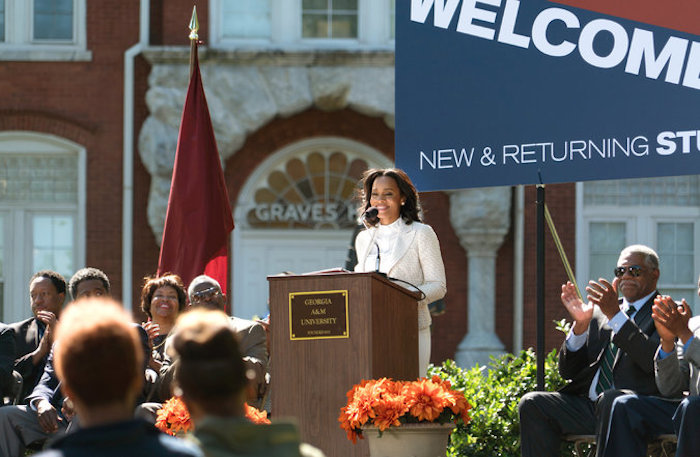
Anika Noni Rose as a university president in “The Quad.” Credit Annette Brown/BET
Highlighting the challenges for college students seeking validation and belonging at a time of newfound self-discovery and freedom, both projects have found support on social media — “The Quad” for addressing sexual assault, and “Burning Sands” for continuing the discussion over initiation processes in Greek organizations.
Still, there have been concerns. In a letter to Debra Lee, the president of BET, William R. Harvey, Hampton University’s president, said the show “feeds a false narrative about the irrelevance” of historically black colleges and universities. At Virginia State University, Mr. McMurray was “booed and jeered” at one point in a discussion after a screening of his film, according to The Chesterfield Observer, with some students asserting that it reinforced stereotypes. In a joint statement in response to the movie, the National Pan-Hellenic Council, an organizing body for historically African-American fraternities and sororities, said it did not “condone, support, or encourage the production of movies, books, or any type of social media that promote hazing.”
Mr. McMurray said that he briefly considered the various responses to his work but moved forward without reservation. “Sometimes you have to take a stand on some things, and I knew I would have to deal with the repercussions. I was at peace with that.”
Mel Jones, a producer on “Burning Sands,” said that greater self-reflection is critical to changing the culture around hazing. “A lot of it is, ‘I’m going to turn a blind eye to it because if I don’t then I have to indict myself for what I’ve done.’ If now people are saying this is wrong, how do you rectify that with yourself?” she said in a telephone interview. “It’s more on an individual level of being able to say, ‘I was young and dumb, and we didn’t actually have to do these things’ — that takes a lot of maturity.”
She added: “At the end of day, being part of any organization isn’t worth anyone’s life. I think we can all agree on that.”
Comment
+ Permalink























